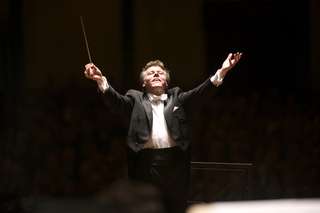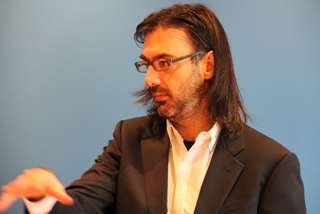|
Back
The Sunlit-Symphony New York
Isaac Stern Auditorium, Carnegie Hall
02/13/2013 - & January 27 (Frankfurt), 28 (Wien), February 12 (Washington), 2013
Béla Bartók: Violin Concerto Nr. 2, sz. 112
Gustav Mahler: Symphony Nr. 1
Leonidas Kavakos (Violin)
Royal Concertgebouw Orchestra, Mariss Jansons (Chief Conductor)

M. Jansons (© Marco Borggreve)
Could the Dutch residents of Niew Amsterdam...er, New York be more proud of anything after “Banana Joe”, the Dutch-born-and-bred Affenpinscher won “Best in Show” at Westminster Monday night?
Until listening to Mariss Jansons conduct the Royal Concertgebouw Orchestra in Mahler’s First Symphony, I doubt that anything could beat this top dog. But the Mahler was so gorgeous from first tentative sparks to last blaze of glory, that “Banana Joe” might not mind being ignored for awhile.
This, was the first of two concerts by the legendary Dutch orchestra, and to hear them play Mahler, under any conductor, would be a treat in itself. Not a single orchestra in the world–not Vienna, not New York, where he conducted–is more deeply associated with the composer. He loved the orchestra, was invited to conduct two of his symphonies there, And for some reason, was programmed more frequently than any composer, leading to a Mahler Festival.
I once asked a very famous Dutch conductor why the association, and he laughed.
“Oh, we Dutch are the most boring people in the world, with the most boring country. So anything which gives us an emotional thrill we take to our hearts.”
He was joking, of course. But when Mariss Jansons signaled the brass section to stand for the climax of Mahler’s First last night, their gleaming instruments, next to the golden-hued harp resembled a little bit of Fort Knox on the stage of Carnegie Hall.
This, though, was not everybody’s idea of great conducting. Mr. Jansons conducted perfectly, the opening A-note going over seven octaves, sounded enough like the composer’s direction “As if voiced by nature”, and the lines went inexorably on from there.
For those looking for a Bernstein-style passion or a Solti-style profundity, this performance might have been disappointing. But for those who, like myself, were looking for Mahler’s youthful love of orchestral playing–his own “youth’s magic horns:”, this was an enticing performance.
That first movement was light, floating, the individual instruments playing their bird-calls, the brass sometimes blurting out their hunting calls, the balance of nature’s sounds far far more perfect than the messiness of real nature
The scherzo was taken with lumpy plodding, but again I think that Mr. Jansons was trying to keep that rural feeling, as if peasants with muddy shoes were unsuccessfully trying to waltz. The Trio, though, was heavenly itself, for Mr. Jansons made the Concertgebouw sing.
In effect, other great European orchestras are sometimes almost intimidating with their attacks, their spot-on playing, their feeling that if you don’t feel their brilliance, then you, the audience, are at fault. The Concertgebouw is never messy, but one has the feeling that music is played for sheer enjoyment.
That third movement, that most tricky parody funeral march, wasn’t exaggerated until the Jewish dance, when Mr. Jansons., slowed, expanded, restarted again, like a group of shtetl Polish Jewish men dancing in their circle. Not only the clarinet, but the whole orchestra managed that Olde Jewish klezmer feeling
The last movement perhaps gave the audience what they expected from Mahler, with great flare-ups, lyrical melodies singing, and the inevitable brilliant ending. For myself, I have rarely heard Mahler painted with such delicious pastel colors. And listening to it with the perfect acoustics of Carnegie Hall, one felt more than ever that Mahler doesn’t demand profundity and religion and tragedy. It can exist...no, it can thrive with the sheer beauty of a sunlit orchestra.

L. Kavakos
The opening was that tightly packed Bartók Second Violin Concerto, played by a man now becoming a New York regular, Leonidas Kavakos. Actually, he could play anything at all, for his Strad is so beautiful, and he is such a dashing-looking performer (albeit with a resemblance to a young Rasputin).
He played the Bartók perhaps too effortlessly, and it somehow lacked the mordant Bartók whiplash sounds, but Mr. Kavakos hardly needed that in the slow movement, with a few measures of almost ecstatic beauty. His focus was never diminished, his Strad was intensely beautiful, and, prompted for an encore, he outdid himself.
What he played was one of the most difficult works in the solo repertory, Eugène Ysaÿe’s Fourth Sonata. So amazing was Mr. Kavakos’ finger work, his double–and even triple-stops were light, almost unassuming. At the end, one was tempted to give the ultimate compliment. Not :”What a great artist”, but “What great music.”
Harry Rolnick
|